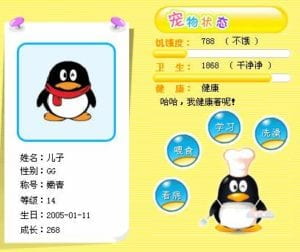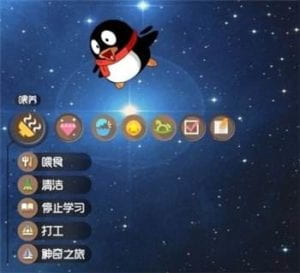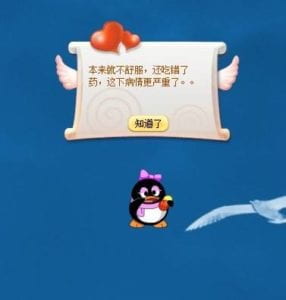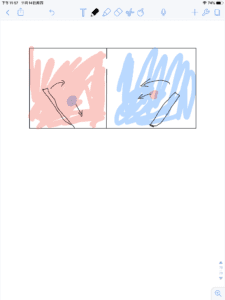Idea 1 “Cat”
The inspiration comes from the Online Pet system. There are many websites that contain a pet raising system, like QQ penguin, (picture) which requires you to feed, shower and play some games to interact with it. However, we find it now so interactive—the pet is only in the screen and you will feel unreal to raise it, and also, after the first glance, you will lose interest on it since you need to “take care ”of it for a long time and gain nothing but the increased data of “happiness of penguin”. That’s why the project failed several months ago.




As a result, what we want to do is divide into 3 different levels: the first is, building a real cat(or other pets);the second is to make the device have the mobility and the ability to store information; the third, which seems even harder, is to connect the system to the Internet, so that it can be a way to socialize, just like what QQ did.
The first level seems more realistic to realize (the fundamental function of the pet) and the cat is connected to the computer.
- Feeding function. To make the pet alive and be happy, you have to give something to the cat to eat. We will use a bowl for you to put “food” in—and as soon as the force sensor sensed something in the bowl, the cat will come to “eat” it. And the screen of the computer will show a full stomach image
- Touching function. To make your pets happy, you have to touch it every 20 minutes or the value of happiness will fall down. Once you successfully touched it, there will be some small games.
- Playing function. Due to the limitation, the function will mostly base on the computer, like you play some small games like chasing balls with your cat, it will be happier.
The second level is to give the cat the ability to move without wires, and as soon it is connected to the computer, the data stored inside it will be automatically uploaded to the computer.
The third level all about computer, but I have no idea how can we upload the data to the Internet…
Idea 2 Bouncing Ball Competition
The second proposal is a game and the inspiration comes from the traditional bouncing ball example. I planned to divide the window into two parts: the left part is red and the right part is blue and there is one ball of a different color bouncing in the space. There will be a block moving on the bottom of the window. Whoever managed to make the ball go to the other side will win.

Here comes an interesting problem: how can we control the block? We planned to use a distance sensor to help you control the block. We will set a area where you can put your hand in and the location of the block is decided by your position in the area. We think it will be an interesting game with interaction and it is more practical to use.
Idea 3 Barrier Breakthrough !
Idea 3 is also a game. To be honest, the inspiration comes from the second proposal. There will still be two players interacting with the distance sensors. However, the game is different. The goal of this game is to get the fruit in the end of the window. To achieve this, you have to get rid of the barriers on the way. The speed of the character in y-axis is going up, so it would be harder in the end of the game. We’ll make several levels of the game.
Bonus
The idea of a “touch pad”
We came up the idea of a touchpad using several distance sensors. By sensering different distance in the x and y axis, we can come up with the location of the hand. In this way, we built a “touchpad” that you don’t really need to touch. I haven’t got an idea how to use it yet, but it may show up in the final project!

